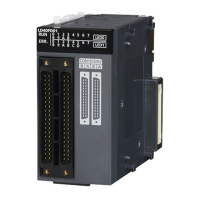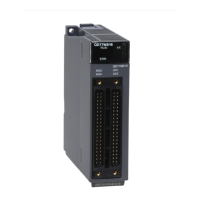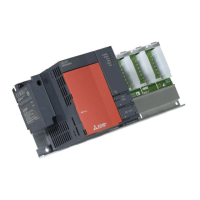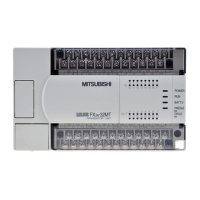68
6.6 Buffer Capacity
Buffer capacity means the size of the buffer that is used to temporarily store collected data.
Sampled data are stored in the specified buffer. The data in the buffer are saved to the SD memory card at the timing
of file saving.
(1) Buffer capacity setting
Increasing the buffer capacity enables the following.
• Trigger logging: The number of sampled data is increased.
• Continuous logging: Processing overflow occurs less frequently.
*1
*1 Adjust the buffer capacity while checking the special register (Free buffer space). When the free buffer space is
insufficient even though the buffer capacity is increased, perform the following actions.
• Increase the sampling interval. ( Page 99, Section 8.4.4)
• Decrease the number of sampled data. Page 101, Section 8.4.5
• Decrease frequency of file switching. ( Page 109, Section 8.4.10)
(2) Buffer utilization
The buffer utilization can be obtained by a formula, "number of device points × 2 bytes + 2 bytes". Note that, if
output of the following column is selected, the corresponding amount is increased.
• Date column: 10 bytes
• Data sampling interval column: 8 bytes
• Execution step No. column: 10 bytes
• Execution program name column: 8 bytes
• Index column: 4 bytes
Outputting data in all columns as data to be sampled by data logging when 128 points is
assigned to one setting (Maximum setting)
128 × 2 + 2 + (10 + 8 + 10 + 8 + 4) = 298 bytes
Item Setting range
Data logging buffer capacity
For each setting, any of 32 to 4832 k bytes (in units of 1 k byte) can be specified. The
total value of settings No.1 to No.10 is up to 5120 k bytes.
1st sampling data
2nd sampling data
1st sampling data
2nd sampling data
Device
area
<Setting 1>
<Setting 2>
Buffer
1st sampling data
2nd sampling data
1st sampling data
2nd sampling data
<Setting 1>
<Setting 2>
SD memory card
Specified
device data
sampling
CPU module
Buffer capacity for setting 1
Buffer capacity for setting 2
Ex.

